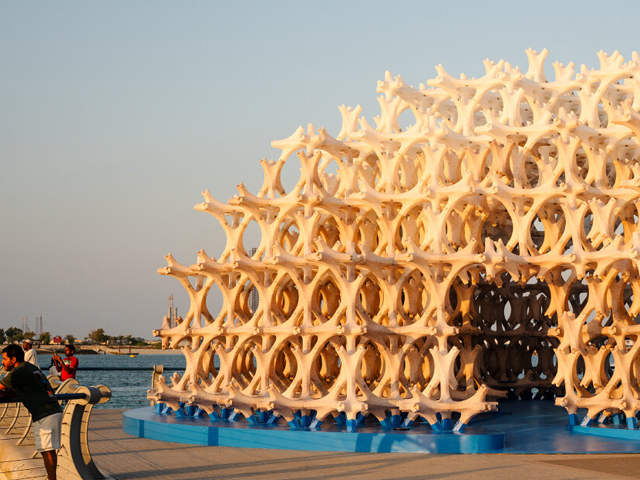UNDERWATER FARMS OF THE FUTURE
04 Jan 2016
A 3D-printed ‘oceanscraper’ offers an underwater future for farming that could provide sustainable ecological solutions for architecture and engineering.

Belgium-born and Paris-based ‘Archibiotec’ Vincent Callebaut is in the research and development stages of a 3D printed oceanscraper called ‘AEQUOREA’. The futuristic underwater farm is situated at the Rio de Janeiro shore and aims to find sustainable solutions to climate change by promoting sea life. The project proposes to recycle ocean plastic pollution and transform the floating garbage patches into building materials for the naval architecture and engineering.




‘Aequorea’ provides sustainable housing to climate change refugees by creating a new water civilisation. The complex is energy self-sufficient, recycles all waste, and fights ocean acidification. The structures continue to self-build through eco-friendly, natural calcification in the same way sea shells do — by fixing the calcium carbonate contained in water to form an external skeleton.
Each ‘Aequorea’ village can welcome up to 20,000 aquanauts. Their main access is on the water surface, through four marinas covered with a mangrove rooted on a floating dome 500 meters in diameter. Modular living, co-working spaces, fab labs, recycling plants, science labs, educational hotels, sports fields, aquaponic farms and phyto-purification lagoons stack up layer by layer. The twisting of the towers is ultra-resistant to hydrostatic pressure. Its geometry allows it to fight marine whirlpools and thus reduce motion sickness.
There’s no more need for coal, oil, gas or nuclear energy to get light, as it will be produced by bioluminescence thanks to symbiotic organisms that contain luciferin, which emits light through oxidation. In order to produce drinking water and fresh water for aquaculture, the OTEC power plant uses the indepth pressure to counteract the osmotic pressure, and to separate the water from the salt via a semipermeable membrane. As for food, algae, plankton, and mollusks will be grown, rich in minerals, proteins and vitamins.

MORE NEWS

SUSTAINABLE PRACTICES IN PUBLIC ART IN DUBAI

SMART, EFFICIENT AND SUSTAINABLE LAWN MAINTENANCE FOR COMMERCIAL SPACES

FULL STEAM AHEAD ON CANBERRA'S LIGHT RAIL

INFRASTRUCTURE THAT WORKS WITH THE LAND

BILLABONG PARKLANDS BRINGS A COOL CHANGE TO CAMPBELLTOWN

